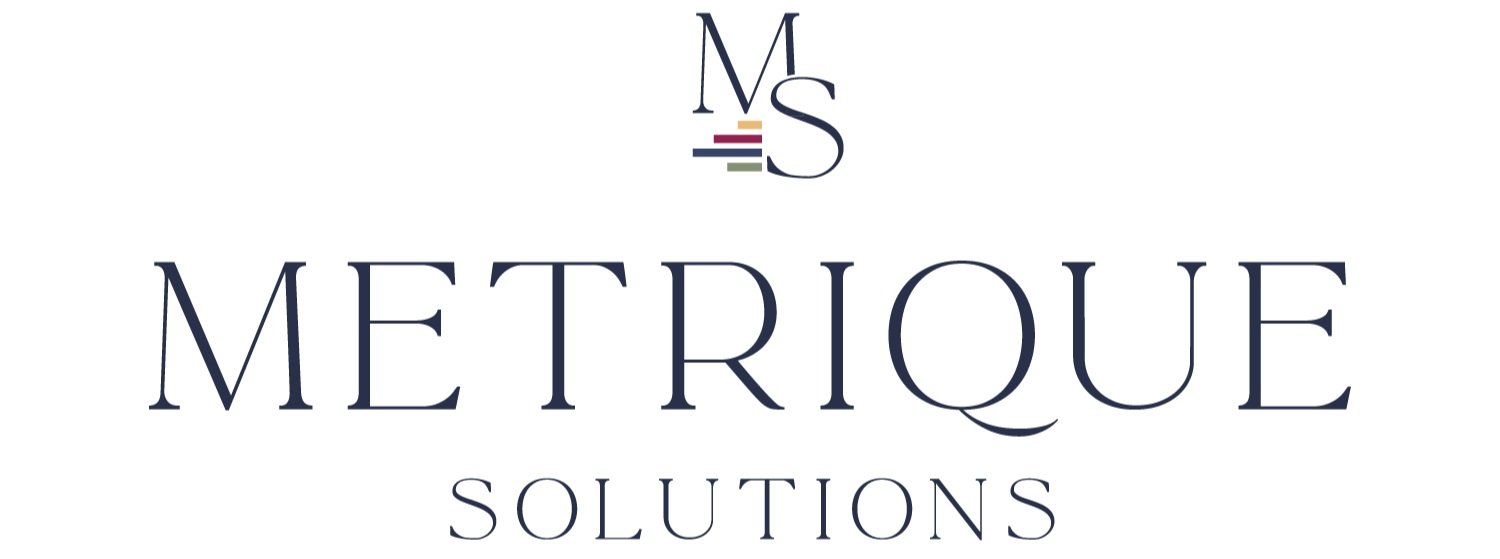How to Measure Business Success & Scale Your Business
When it comes to personal goals, success looks different for everybody. But in business, success is measured by numbers…and for good reason. Numbers are objective which allows you to make wise decisions with less cognitive bias or emotional overwhelm.
If you want the business you’ve created to grow sustainably, you need a way to measure its success based on your most important goals. Why? So you know where you should (and shouldn’t) spend the precious resources of your time, energy, and money.
You may have started your business to support your family while doing what you love. Or maybe you wanted to make a difference in the world through your services or products.
When your business is run properly, it allows you to do both - make more money for yourself while also helping more people through your services or products.
In this article, you’ll learn two simple ways to measure business success to help you achieve either of these two goals. You’ll also learn how arriving at these numbers can help you scale your business faster so you can earn more while working less.
What Should You Measure Business Success Against?
Without a clear way to measure success, it’s easy for business owners to become exhausted or overwhelmed. You might feel like you’re constantly chasing after something…but you don’t know what that something is. So you never feel like you’re getting anywhere and have the sense that you’re always having to do more!
The problem is that you can’t measure success if you don’t have anything to measure it against!
The only way you can measure success is to set it.
Assuming that you want to run a profitable business, one way to measure success is to look at your net profit. Yet underneath the desire for profit is usually a desire to achieve one of two main business goals:
Sell more of your services or products to have a bigger impact with your work
Make a larger income for yourself as a business owner
While the first goal often supports the second goal, there may be years when you focus on one goal more than the other. If you’re just starting out in your business, you might be focusing on keeping expenses low so you have the means to support your personal financial goals. Without that foundation, it can be hard to think about investing more into your business.
So the first consideration is to think about where you are in your business. Are you measuring your success against your ability to meet your personal financial goals? Or against your ability to get your product or service in front of more people without draining your personal time and resources?
Here’s where we introduce two helpful approaches to measuring business success. Neither one is better than the other, they’re just different depending on your current priorities. And both can be super helpful in deciding when and how to scale your business!
Approach #1: Business Success as Financial Freedom For You
One of the most common ways business owners measure success is looking at their take-home income. This is called the bottom-up approach. We’re looking at the bottom line of what you want to earn and working our way up to see what it’ll take to achieve that level of “success.”
What does this look like in real life?
Let’s say you want to make $100,000 of take-home income as a business owner this year.
First, you’ll need to decide how much you want to:
Set aside to pay in taxes
Keep in the company as profits (a.k.a. retained earnings)
Allocate toward other savings goals such as retirement
As an example, you might decide to set aside $25k for taxes, $10k to keep as profit in your business, and $5k to allocate toward your retirement savings.
When you add these numbers up, you get $140,000.
(Here’s the breakdown:
$100,000 take-home income + $25,000 taxes + $10,000 profit + $5,000 retirement savings = $140,000.)
This $140,000 is the Net Income you need to succeed in having a $100,000 take-home income to pay your bills, support your family, and spend on personal goals, vacations, or bucket-list items.
How Much Do You Need to Sell to Make This Income?
Once you know the Net Income you need to make, you can use that to figure out how much of a Gross Profit you need to earn based on your estimated expenses.
If your business expenses are $60,000 per year, you need a Gross Profit of $200,000 to generate $140,000 in Net Income. ($200k Gross Profit - $60k Expenses = $140k Net Income)
So the next question becomes: How much do you need to sell to get to that Gross Profit goal?
Gross Profit is your revenue minus your cost of goods sold (COGS).
If your business is all service-based, your COGS is likely zero. So you’d need to sell $200k worth of services to generate $140,000 Net Income (after $60k of operating expenses).
If your business sells products, you’ll look at your average COGS and use that to work back to your total revenue. For example, if your COGS is typically about 50% of your sales, you can double your COGS amount to arrive at the revenue number you need to generate. So if your COGS is $140k, then you need to sell $280k to generate a Gross Profit of $140k.
📖 Want to gain a better understanding of terms like gross profit, COGS,
and net income so you can manage your business finances with confidence?
Approach #2: Business Success as Increased Revenue
If you’re not quite sure how much you want to take home in profit but want to hit a certain sales number, you can use the top-down approach to track and measure success in your business.
You start with the revenue or total sales amount you want to generate.
Let’s say you want to do $750,000 in revenue. You think it’ll take $450k COGS to generate this amount of revenue. This gets you a Gross Profit of $300k.
But what does that mean for you as the owner in terms of income?
Here’s how you’ll find out:
Add in your estimated expenses to work down to your Net Income.
If your operating expenses are $100k, you get a Net Income of $200k. Then you’ll take into account the same questions as listed in approach #1 (taxes, profits, other goals such as retirement) to figure out how much take-home income you can expect if you generate the given amount in sales.
If sales is your measure of success, you can then use this approach to determine what expenses your business can incur to achieve this goal without more time or energy on your part.
Scale Your Business by Focusing on Your Measure of Success
The more sales you want to generate in your business, the more time or money it might take to do so…unless you invest in systems, processes, and people that allow you to scale your business. Especially if you’re a service-based business, there’s only so much YOU can do to meet your business goals without burning out.
As your business grows, you may find that you need to invest in scaling by:
Delegating tasks to others and hiring people
Investing in technology to make running your business easier
Raising capital from outside sources
This is where you can use the two approaches above to figure out how much you need to sell and how many hours you (or your team) will need to put in to generate your desired success measures.
An Example of Scaling to Increase Sales & Work Less
Let’s say you want to work 40 hours per week, 42 weeks out of the year. That gives you 1680 hours in the year. If an hour’s work brings you $120 in revenue (think of this as your average billable hourly rate), you’ll be able to generate $201,600 in revenue by working 1680 hours.
If you’re using approach #1 and have a certain take-home income goal, this formula can help you figure out how many hours you might need to work.
Annual revenue(for service-based businesses) =
Hours you want to work per week x Number of weeks in year x Average billable hourly rate
On the other hand, if you’re taking approach #2 and want to generate $500,000 in revenue and your customers pay $120 per billable hour for your services, you'll learn that you’d need to work 4166 hours per year.
This translates into 99 hours per week (if you want to work 42 weeks/year). Not only is working 99 hours a week NOT sustainable for your health, it’s also NOT sustainable for your business.
So to reduce the overwhelm and scale your business for success, you may need to hire one or two more people who can do this kind of work. You then build the labor expense into your model and see how it affects your net income.
Create Your Business Financial Plan For Success
Using these measures of success can help you make better business decisions so you increase revenue, income, and profitability faster. Yet it can definitely be overwhelming to try to calculate all these numbers yourself every month or quarter. That’s where Metrique comes in to make your life simple by calculating these important measures of success for you!
After reviewing each of these two approaches to measuring business success, which one resonates with you most?
If you wish to use your take-home income as a measure of success for your business, use the example in Approach #1 above (or have Metrique do it for you) to arrive at the sales amount you need to generate to get that take-home income.
You can then experiment with sales and expense numbers that allow you to get to your goal in the best way possible.
If you wish to use your revenue goal as a measure of success in your business, use the example in Approach #2 above (or have Metrique do it for you) to arrive at the net income you can expect to generate in your business.
You can then experiment with the expenses that allow you to get to your revenue goal without sacrificing your personal take-home income.
Metrique is the financial dashboard that allows you to create a financial plan for your business and track progress along the way to your success.
Why not start by running the numbers for your business goals for the next quarter? Click here to let Metrique show you what to focus on next to grow and scale your business faster.


